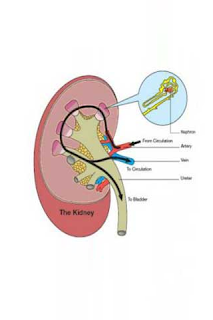Things You Most Likely Didn't Know About Spinal Stenosis Surgery
In the medical field, stenosis means the abnormal narrowing of a body channel. When combined with the word spinal, it defines a narrowing of the bone channel occupied by the spinal nerves or the spinal cord. In many cases, the non-surgical treatment is not the permanent answer to treat spinal stenosis. The non-surgical methods may relieve your pain in some cases. But when the weakness and the numbness of the back and legs persist, the surgical operation is the only option left. The goal of surgery is to relieve pain, numbness, or weakness in the legs-not to relieve back pain.
Careful assessment of spinal stenosis symptoms is vital to reduce the risk of unnecessary back surgery and complications from spinal stenosis surgery at the wrong level.
TYPES OF SPINAL STENOSIS SURGERY
The most commonly performed spinal stenosis surgery is for lower back pain and leg pain due to sciatic nerve compression in the lumbar spine.Thoracic spinal stenosis is less common than lumbar or cervical spinal stenosis as the thoracic spine is less mobile and, therefore, less susceptible to the wear and tear. Common spinal stenosis surgeries include foraminotomy to open up the spaces through which the spinal nerves exit the spinal column, laminectomy to decompress the spine, laminotomy, and spinal fusion.
SPINAL STENOSIS SURGERY COMPLICATIONS
Spinal stenosis surgery complications do occur and should be considered prior to making a decision to have surgery for back pain, neck pain, or other issue arising from spinal canal narrowing (spinal stenosis). Though the compaction ratio is nominal but few of them are critical, the complications include Nerve root damage, Cerebrospinal fluid leak, Infections.
THINGS TO TAKE CARE BE FOR SURGERY
To prepare for spine surgery, quit smoking if you smoke, exercise on a regular basis to improve your recovery rate, stop taking any non-essential medications and any herbal remedies which may react with anaesthetics or other medications and ask your surgeon all the questions you may have.
RECOVERY
After your surgery, you aren't going to be instantly better. You will most likely be out of bed within 24 hours, and you'll be on pain medications for 2 to 4 weeks. After the surgery, you'll receive instructions on how to carefully sit, rise, and stand. It's important to give your body time to heal, so your doctor will probably recommend that you restrict your activities: In general, don't do anything that moves your spine too much. You should avoid contact sports, twisting, or heavy lifting while you recover.
Know more about spinal stenosis Surgery, its medication, cause, and spinal stenosis surgery complications with spinalstenosis.org which ensure the most accurate and recent information to online the researchers across the globe.

Comments
Post a Comment